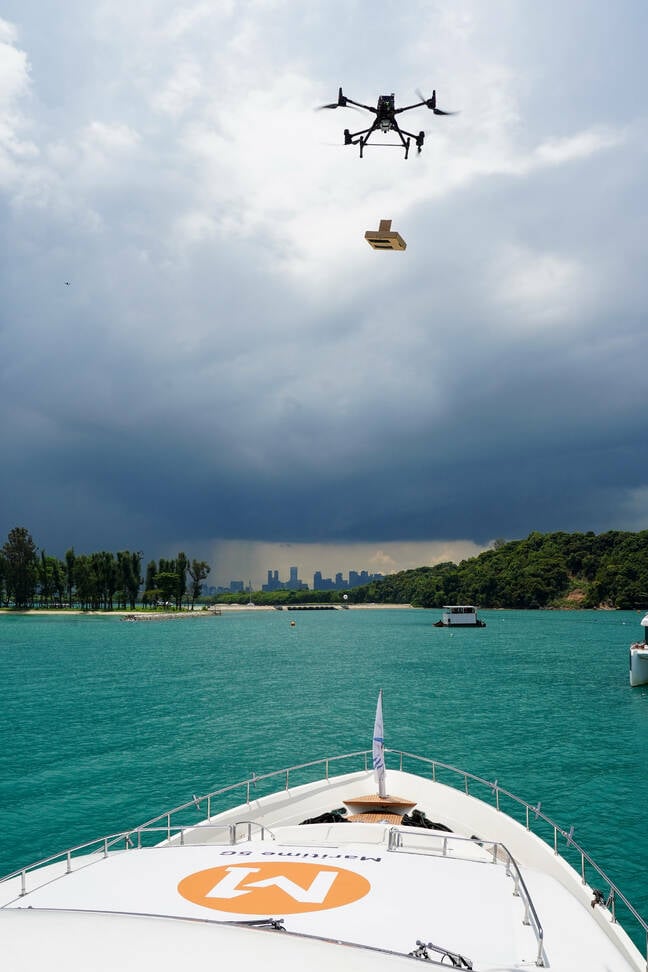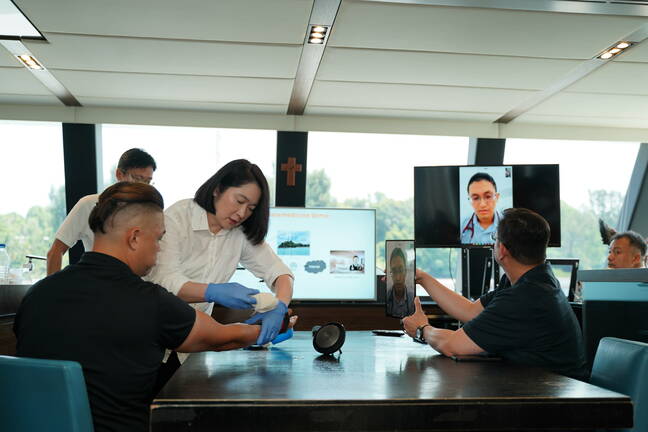5G On The High Seas Brings The Internet Of Things To Singapore's Port
For years The Reg has heard how 5G's many features will profoundly change every industry under the sun. Yesterday we saw an example of that claim that holds water: a plan bringing comprehensive 5G coverage to Singapore's maritime industry.
The island nation is one of the world's major ports and is home to over 5,000 maritime companies, while more than 4,400 vessels sail the seas under the Singaporean flag.
And because you're reading this in 2023, all aboard those craft appreciate good connectivity.
However, the space that extends southward from mainland Singapore to its port limits has spotty wireless coverage, despite housing small islands serving tourists, research centers, a remote island that houses a landfill, chemical plants, and fish farms. Then there's the underwater gas and oil pipelines that require occasional inspection or maintenance.
In the past, the government has experimented with different ways to bring connectivity comparable to 5G to the area, including the use of television white space for data transmission over long distances.
Singapore telco M1 said on Wednesday it aims to bring 5G to all the city's port limits by 2025, with much of the relevant area already covered by mid-2023.
- At 9 for every 100 workers, robots are rife in Singapore – so we decided to visit them
- Building your own private 5G is as easy as Wi-Fi
- Phở no! Vietnam's last working submarine cable glitches out
- Ransomware severs 1,000 ships from on-shore servers
M1 has built roughly a dozen towers across the islands that dot the area. Devices communicate with base centers, which in turn transmit data back to the mainland over line of sight microwave, an M1 representative explained to The Register at a press event on Tuesday.
"Back on land we have a cloud native 5G core network, which allows us to do network function exposure to our partners. We could actually transfer the data directly to the data centers, or some hybrid data centers," he said, adding that some of those partners may have in-house analytics capabilities. M1 currently partners with Nokia to deploy the cloud-native core software.
"So it's a very end-to-end ecosystem," explained the M1 representative. "It is possible in 5G because of factors like network slicing, which we have a secure slice of the network solely for us."
One of the extended network's benefits is that tourists visiting outlying islands to enjoy their beaches or fishing won't accidentally roam onto networks in neighboring Indonesia. International roaming produces bills that ruin a nice day out.
For the maritime industry, 5G means the chance to put the Internet of Things to work.
M1 said it would have packaged 5G solutions for autonomous robots inspecting critical assets sometime in Q3 this year, which would reduce the need to fly inspectors out to make such assessments in person. But for now, the use cases on the mind of M1 and IMDA center on assisting shipboard life by offering video surveillance and telemedicine.
M1 has partnered with a local health company, Fullerton Health Clinic, to offer telemedicine services that see a Samsung tablet used to make live calls placed to a mainland doctor from a ship. During a demo seen by The Reg the call did drop – but M1 said should that happen, there is a resumption protocol. If that fails there is a call center, which The Register is sure is an absolute joy to navigate.
Should medicine be required, a drone can deliver the goods a mere two or three hours after a consultation. M1 demonstrated a drone delivering supplies to an almost 11 square meter space aboard a yacht.
M1 CEO Manjot Singh Mann called telemedicine the "first forerunner" of maritime 5G. The CEO said he takes a type of 'build it they will come' philosophy.
Onboard real-time surveillance packages start at $3700 per vessel, for a package that includes a 5G router, a network video recorder and two high-definition video cameras. The cameras uplink via 5G to a tower which downlinks back to an onboard screen on the ship while utilizing online SaaS surveillance software. A dedicated internet link from the software sends it to a third screen monitored offsite – presumably on the mainland.
"When 3G turned to 4G, nobody thought it would do anything really great, but 4G LTE enabled mobile first," Mann said, adding that we're yet to know all the maritime use cases that 5G will bring. ®
From Chip War To Cloud War: The Next Frontier In Global Tech Competition
The global chip war, characterized by intense competition among nations and corporations for supremacy in semiconductor ... Read more
The High Stakes Of Tech Regulation: Security Risks And Market Dynamics
The influence of tech giants in the global economy continues to grow, raising crucial questions about how to balance sec... Read more
The Tyranny Of Instagram Interiors: Why It's Time To Break Free From Algorithm-Driven Aesthetics
Instagram has become a dominant force in shaping interior design trends, offering a seemingly endless stream of inspirat... Read more
The Data Crunch In AI: Strategies For Sustainability
Exploring solutions to the imminent exhaustion of internet data for AI training.As the artificial intelligence (AI) indu... Read more
Google Abandons Four-Year Effort To Remove Cookies From Chrome Browser
After four years of dedicated effort, Google has decided to abandon its plan to remove third-party cookies from its Chro... Read more
LinkedIn Embraces AI And Gamification To Drive User Engagement And Revenue
In an effort to tackle slowing revenue growth and enhance user engagement, LinkedIn is turning to artificial intelligenc... Read more



